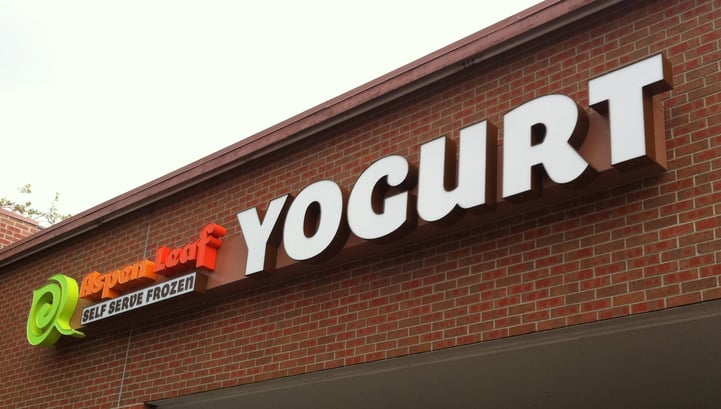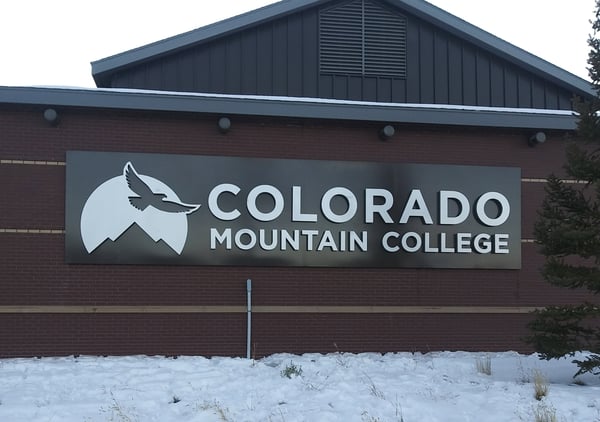
Channel Letter Signs – A Profitable Investment For Your Business
You most likely found our article with the intent to understand better how channel letter signs are priced and what you should be paying for a new or replacement sign. This article intends to help you get closer to the specific answer you need.
Signdealz has sold hundreds of channel letter signs to small and medium-sized businesses across the country for the last decade. In this article, we are going to show you how to determine the best price for your sign. Please remember to leave a comment or send us an email for updates or information you would like to have added.
Channel letter signs are advertising.
Let's start with the simple premise; you are not buying just a channel letter sign. You are buying advertising for your business or organization. There is a big difference between these two concepts. A channel letter sign is just an object and will not work well as an advertising device if poorly designed. If you spend too little, it most likely will not attract enough potential customers, spend too much, and you may not get a good Return On Investment (ROI). Our goal at Signdealz is for you to pay just the right amount of money, and let us help to configure a great sign that attracts customers to your business.
Channel letter signs are an investment.
While channel letter signs can be a significant investment for business owners, it is important to note their durability, ease of replacement in vandalism or storm, and shiny first impression make them a far greater value than less expensive solutions. Statistics have historically proven in various industries; channel letter signs have a highly positive impact on sales. It's no wonder so many business owners opt for bold, dynamic channel letters for their marquee signage solution. Return on investment is more significant than ever, considering the business you may have lost during the COVID-19 pandemic. When considering the right sign for your business, it is first necessary to evaluate your sign manufacturer and quote to ensure you are getting the right channel letter sign for the right price.
Channel Letters Cost:
We should tell you what we have found to be the average price of a nationwide set of channels nationwide is between $3500 to $4000. Why? The number one factor driving this average price is the most common type of customer. The most common customer type is a single-tenant business in a community-based shopping center in a 1200 square foot retail space. They purchase one channel letter sign for the front of their building. The front of their retail space is typically between 20' to 30' feet wide. Most municipalities in the country allow between 25 to 50 square feet of allowable sign area for this type of business. The typical sign will have between 12 to 18 characters, and the letter height will be between 15" to 20 "H. You may or may not have a logo on the sign. The price stated above does not include project administrative fees, permit procurement fees, or installation. We recommend you visit our pricing page for more information on total sign project pricing.
Cost Factor 1: Sign Size
The size of your sign is the single most significant contributor to the cost of the sign. (Explain the price of the components
Your channel letter sign is manufactured from a variety of components:
- .040 or .063 Aluminum Sheeting for the backs of the channel letters
- .040 Aluminum is used for the sides (returns) of your channel letters. For standard returns such as a 5" high return, the Aluminum comes in rolls.
- 3/16" Acrylic Sheet (Various Colors can have a different cost). Prices for a 4' X 8' Acrylic sheet range from $90 to $200 depending upon color and thickness. 3/16" Acrylic sheet is the most commonly used thickness.
- 16 to 20 gauge wire and Wire Connectors
- Acrylic Trim Cap
- LED's (Different colors and brightness levels can decrease or increase cost)
- Power Supplies - Power Supplies provide power to the LEDs.
- Threaded Rod and Nutzerts are used to fasten a flush-mounted sign to the wall.
- Assembly Labor
- Raceway Components: There are two types of raceways. Stick Built and Extruded. Stick built is a hand made raceway and an extruded raceway is a fabricated assembly build by a machine.
The more letters and the larger the channel letters you add to a channel letter sign, the more components and materials are used to manufacture the sign. Thus, the more expensive your channel letter sign gets.
Cost Factor 2: Raceway Mounted Vs Flush Mounted Channel Letters:
Depending upon the wall's configuration, the sign is going on. You are going to need to determine if a raceway is required. What is a raceway? A raceway or commonly called a wireway, is a portion of the sign that looks like a box behind your channel letters. A raceway contains power supplies and wiring of the channel letter sign outside of the building, so numerous holes do not need to be drilled through the wall to accommodate the wiring.  You will commonly find raceways used on brick, block, and concrete walls where installing flush-mounted channel letters would be too tricky or damage the building.
You will commonly find raceways used on brick, block, and concrete walls where installing flush-mounted channel letters would be too tricky or damage the building.
Channel Letter Raceway Pricing
Channel letter raceways are quoted by the foot. You will find raceway pricing from as low as $35 a linear foot to as much as $65 a linear foot or more. Raceways have to be cut, fabricated, wired, and painted. Most common sizes are 5"W X 6"H, 8"H X 8"H, and 3"W X 6"H. There are three standard raceway types.
- Standard Stick Built: This type of raceway is built by hand by a fabricator with a combination of aluminum sheeting and aluminum or steel angle iron.
- Extruded Aluminum Raceway: Extruded raceways are built from Aluminum into a component-based system that includes a mounting bar, lid, and end caps. This type of raceway is the most expensive but requires the least labor to wire and assemble.
- Custom Built or Wireway: This type of raceway is generally more extensive and is built to accommodate large letter sizes over 18"H. Wireways are often used as a decorative element in channel letter signs. These raceways are not priced per the linear foot but estimated on time and materials.
Channel Letter Price comparison - THE MOST IMPORTANT FACTOR
The only accurate way to determine if you are getting a competitive price is to ask a competitor to bid on your job based on the original specifications so you get an apples to apples quote.

Apples to Apples starts with the sign specifications.
To start comparing quotes requires that you already have a set of drawings produced by a sign company. Sign companies create a quote based on the specifications in your sign design. These specs matter! The drawing should include the faces' thickness, the letters' height, letter back thickness, and return size. If you look at your drawings and don't see any specifics, that is the first sign that you need to start asking questions.
You will need to provide these drawings to the competitor or have the competitor create an entirely new illustration to start the quote process. Please understand, for a sign company to develop an accurate set of drawings, they have already spent a considerable amount of time doing a code review (30 mins to 1 hour), developed your sign specifications (30 min to 1 hour), and produced a set of drawings (1 to 3 hours). They have probably invested at least $200 in labor in many cases. You should consider the time and effort they have provided in the quote comparison and give them credit for the effort.
Give the bidder financial credit for the effort produced. {Show and Example}
Lump-sum vs itemized estimates
Many sign companies provide a lump sum estimate and will not itemize their quote. This will make it difficult for you to analyze the difference between the two. Make sure you ask the sign company to provide a line itemized quote to determine installation, sign cost, and project administrative fees.
You get what you pay for
The old saying goes, "You get what you pay for", and in most cases, it's true. Your evaluation of the competitor's quote should include not just the sign's cost but how is their service after the sale?
- Do they have great reviews?
- What is their warranty?
- Do they actively manage your project with a project manager or is it the salesman or owner doing it?
- What does the warranty cover?




-(1)_1696879152.png?width=254&height=55&name=Signdealz-Web-Logo-2023-(Transparent-Background)-(1)_1696879152.png)




